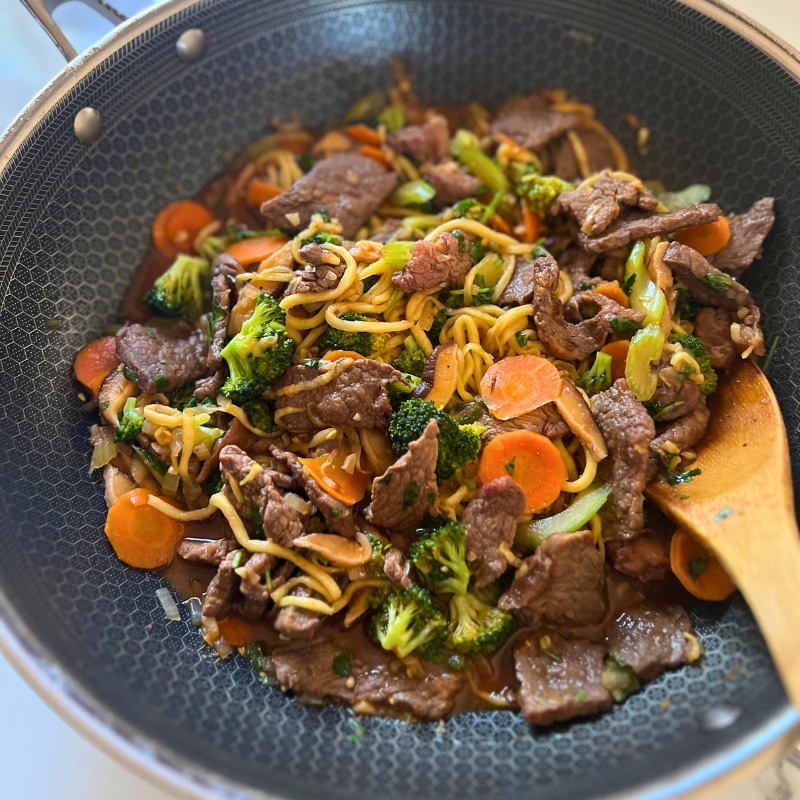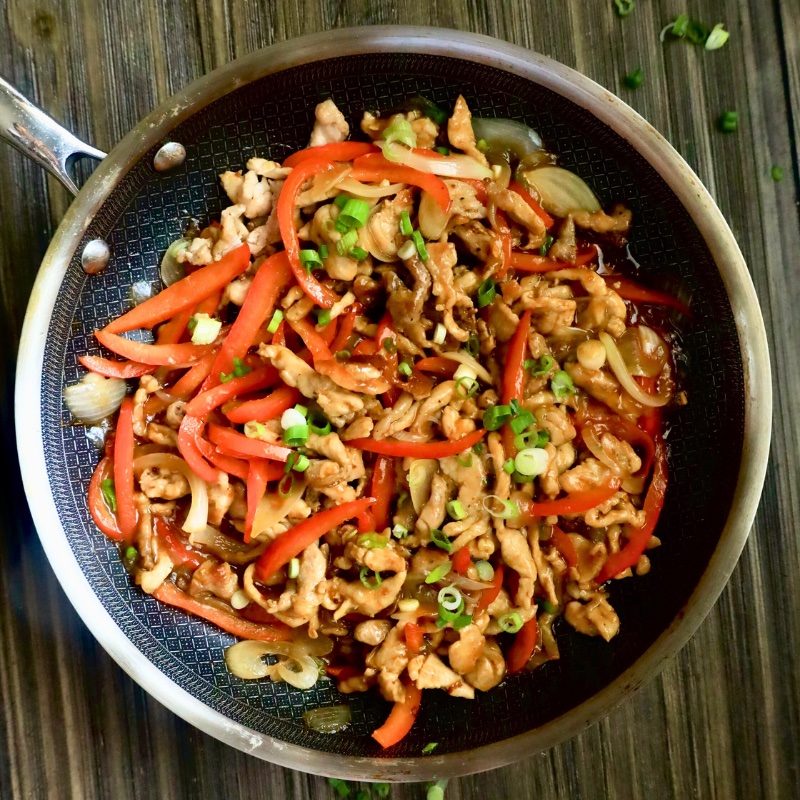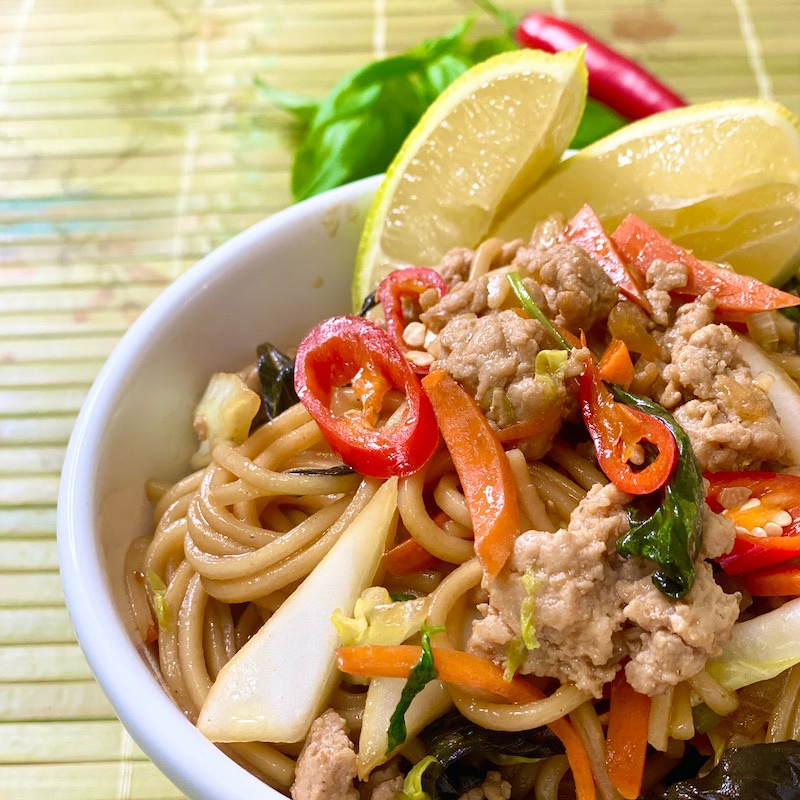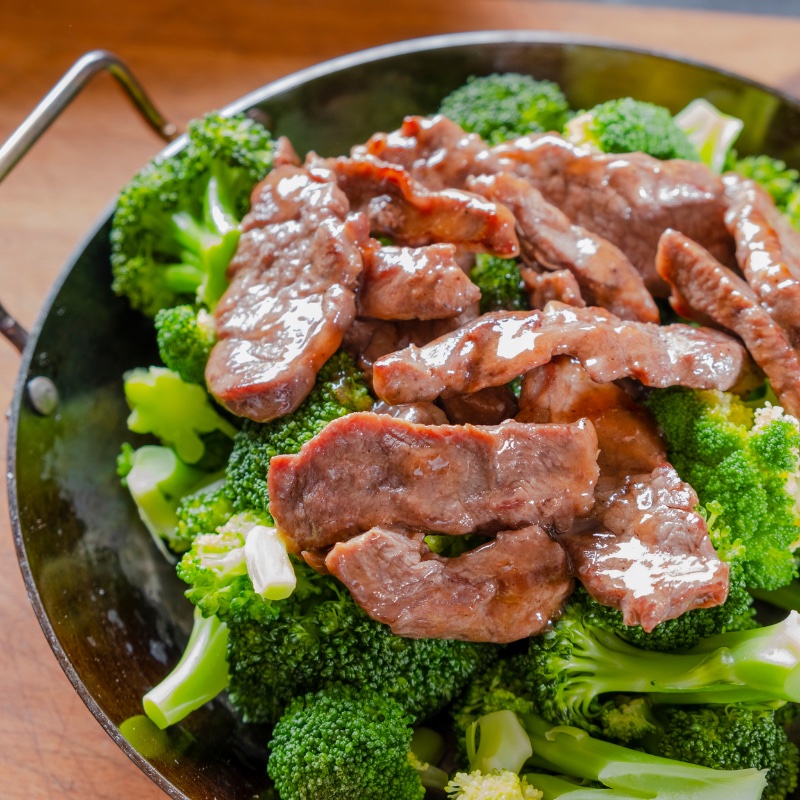Gochujang Chicken Stir Fry
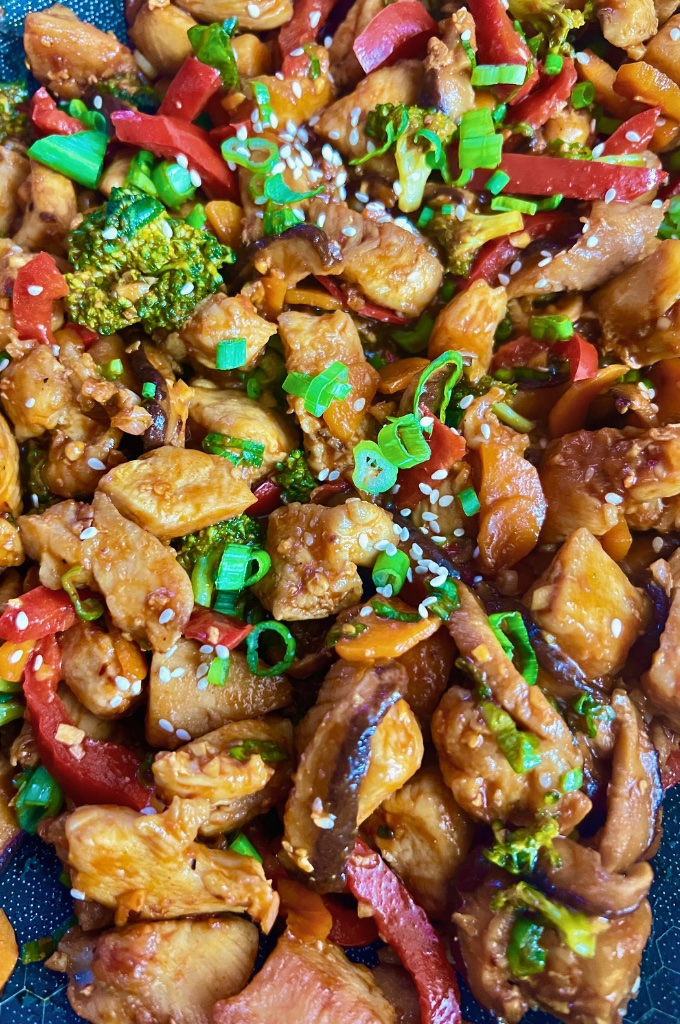
Gochujang Chicken Stir Fry is a delightful fusion of spicy, sweet, and savory notes. The sauce, a harmonious blend of Korean Gochujang chili paste, tomato paste, soy sauce, honey, rice vinegar, sesame oil, minced garlic, minced ginger, and red chili pepper flakes, brings depth and complexity to every bite. Paired with perfectly seared chicken breast and an array of colorful vegetables, including earthy shiitake mushrooms, this dish promises an exciting and satisfying culinary experience.
.
.
.
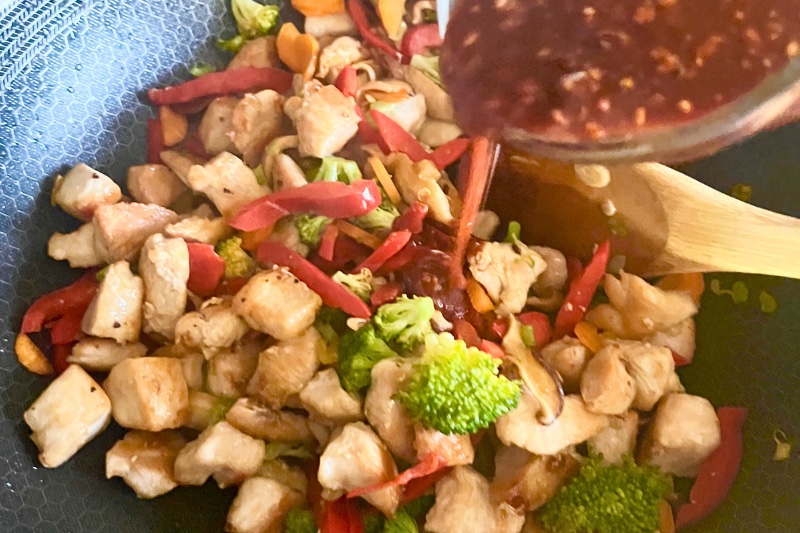
.
WHAT IS GOCHUJANG?
.
Korean Gochujang chili paste is a traditional fermented condiment that is central to Korean cuisine. It is made from red chili powder, glutinous rice, fermented soybeans, and salt. The mixture is then left to ferment for an extended period. Often several months, which allows the flavors to meld together and develop a rich, complex profile.
Gochujang is known for its deep, savory umami taste, balanced sweetness, spiciness, and a hint of earthiness. The fermentation process not only enhances its flavor but also contributes to its thick, sticky texture.
This versatile paste is used in a wide variety of Korean dishes. From bibimbap (mixed rice) and tteokbokki (spicy rice cakes) to marinades for meats and dipping sauces. It adds a distinct depth and heat that is characteristic of Korean cuisine. Making it a staple in many households and an essential ingredient for anyone interested in exploring Korean cooking.
OTHER RECIPE IDEAS:
.
WHY GOCHUJANG IS PERFECT FOR STIR-FRYING
.
Gochujang chili paste is a fantastic addition to stir-frying, particularly when it comes to chicken and vegetables, for several reasons:
- Flavor Depth: Gochujang is known for its deep, complex flavor profile. It combines the heat of chili peppers with a subtle sweetness, a hint of umami from fermented soybeans, and a touch of saltiness. This combination adds a rich, multi-layered taste to stir-fried dishes, making them more exciting and flavorful.
- Versatility: The paste can be easily adjusted to suit different palates. Whether you prefer a mild hint of spice or a fiery kick, you can control the amount of gochujang you add to your stir-fry. This flexibility makes it a versatile ingredient for a variety of dishes.
- Consistency: Gochujang has a thick, paste-like consistency that clings well to ingredients. When stir-frying chicken and vegetables, helps to create a cohesive dish where every bite is evenly coated with the delicious sauce.
- Health Benefits: Gochujang is made from fermented soybeans, which means it contains probiotics that are beneficial for gut health. Additionally, it is typically lower in calories compared to other stir-fry sauces, making it a healthier option without compromising on flavor.
- Ease of Use: Incorporating gochujang into your stir-fry is straightforward. A spoonful can be added directly to the pan along with your chicken and vegetables, or it can be mixed with other seasonings and liquids to create a more complex sauce. It melds well with other common stir-fry ingredients like garlic, ginger, soy sauce, and sesame oil.
- Cultural Authenticity: Using gochujang in stir-fries can bring a touch of Korean cuisine to your kitchen. It allows you to explore and appreciate the flavors of Korean cooking, adding an authentic twist to your meals.
.
INGREDIENTS FOR GOCHUJANG CHICKEN STIR FRY
.
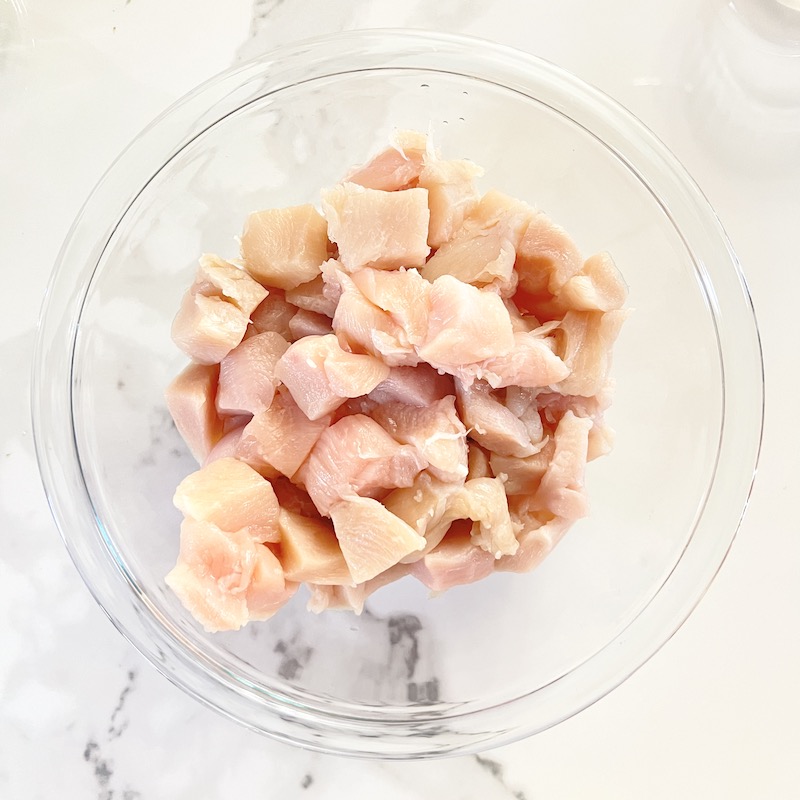
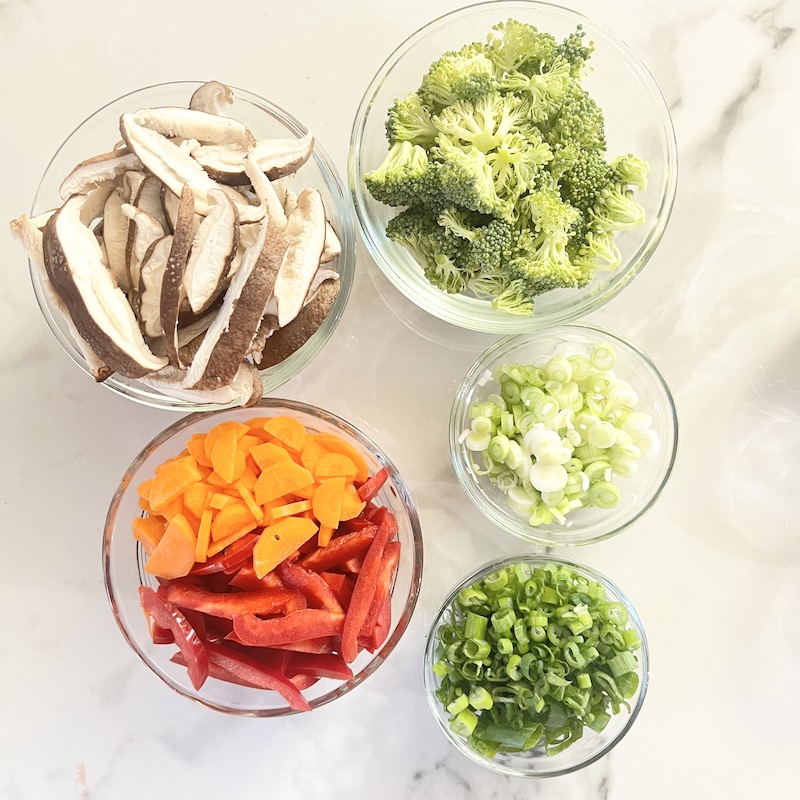
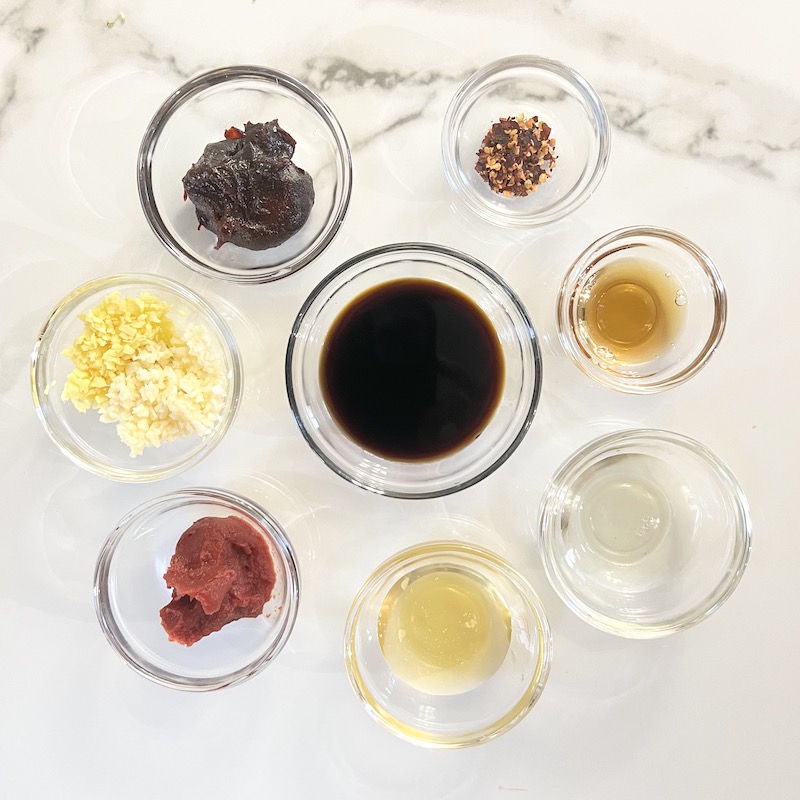
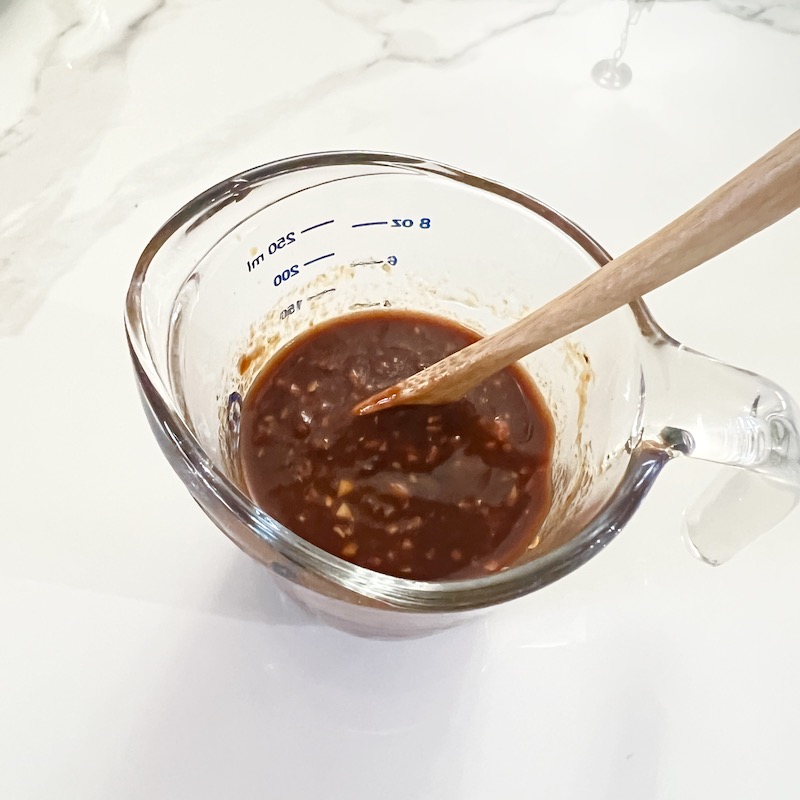
.
MEAT:
Chicken Breast: The star of the dish is boneless, skinless chicken breast, cut into bite-sized pieces. When seared, this lean protein becomes tender and juicy. Providing a hearty base that pairs well with the vibrant flavors of the stir fry.
VEGETABLES:
Shiitake Mushrooms: These mushrooms add a rich, umami depth to the dish. Their meaty texture complements the chicken and adds a savory note that enhances the overall taste.
Bell Peppers: Bright and colorful bell peppers not only bring a sweet crunch to the stir fry. It also has a burst of vibrant color. They are packed with vitamins and add a delightful contrast to the other ingredients.
Carrots: Sliced thinly, carrots contribute a subtle sweetness and a satisfying crunch. They also bring a pop of orange to the dish, making it more visually appealing.
Broccoli: This nutrient-dense vegetable adds a slightly bitter flavor and a wonderful texture to the stir fry. Its green florets soak up the sauce beautifully, ensuring every bite is flavorful.
Green Onions: Green onions provide a mild, fresh onion flavor that brightens the dish. They are used both as a cooking ingredient and a garnish. It adds a touch of color and a hint of sharpness.
SAUCE:
Gochujang Chili Paste: The soul of the sauce, gochujang is a Korean chili paste. It offers a perfect balance of spicy, sweet, and savory notes. It gives the dish its distinctive heat and depth of flavor.
Tomato Paste: This ingredient adds a concentrated tomato flavor that enriches the sauce. It helps to balance the spiciness of the gochujang with a hint of sweetness and acidity.
Soy Sauce: A staple in many Asian dishes, soy sauce provides the necessary saltiness and umami, enhancing the overall depth of the stir fry.
Rice Vinegar: A splash of rice vinegar adds a tangy acidity that cuts through the richness of the sauce, balancing the flavors perfectly.
Sesame Oil: With its nutty aroma and flavor, sesame oil adds a layer of complexity and a finishing touch to the sauce.
Minced Garlic: Fresh garlic infuses the dish with its pungent, aromatic flavor, making each bite more savory and delicious.
Minced Ginger: Ginger adds a zesty, slightly spicy flavor that complements the other ingredients and adds a refreshing note to the dish.
Honey: A touch of honey adds sweetness, balancing out the spiciness of the gochujang and the acidity of the tomato paste and vinegar.
Red Chili Pepper Flakes: For those who enjoy an extra kick, red chili pepper flakes intensify the heat, making the dish more exciting and dynamic.
.
HOW TO MAKE GOCHUJANG CHICKEN STIR FRY
.
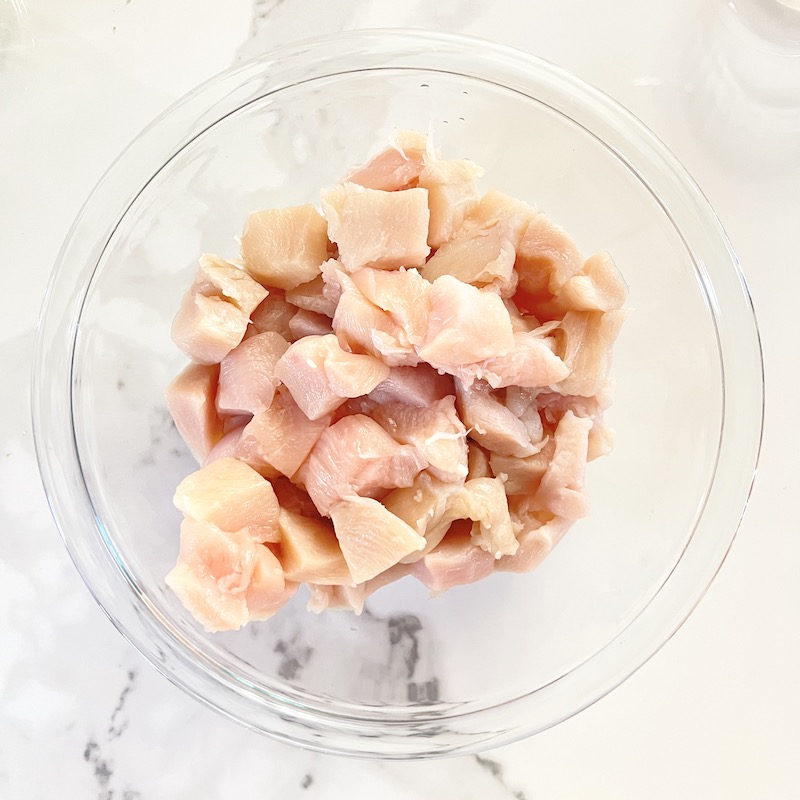
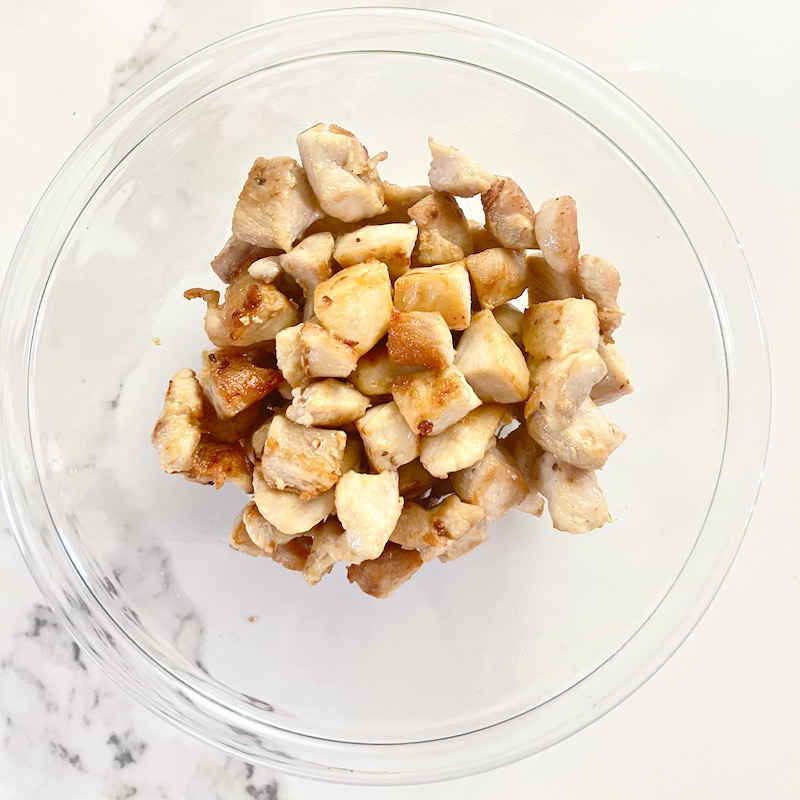
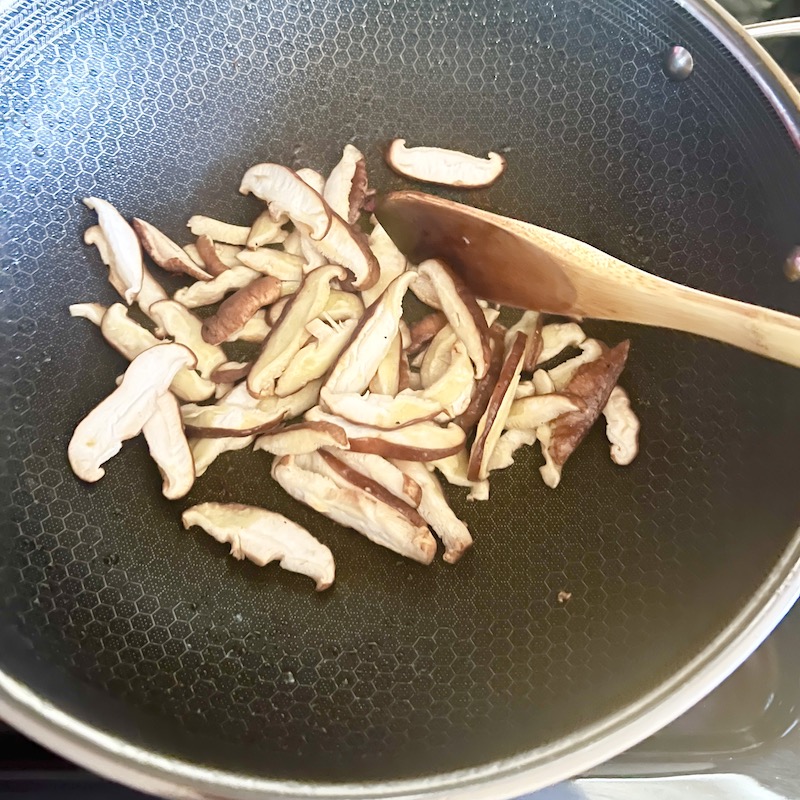
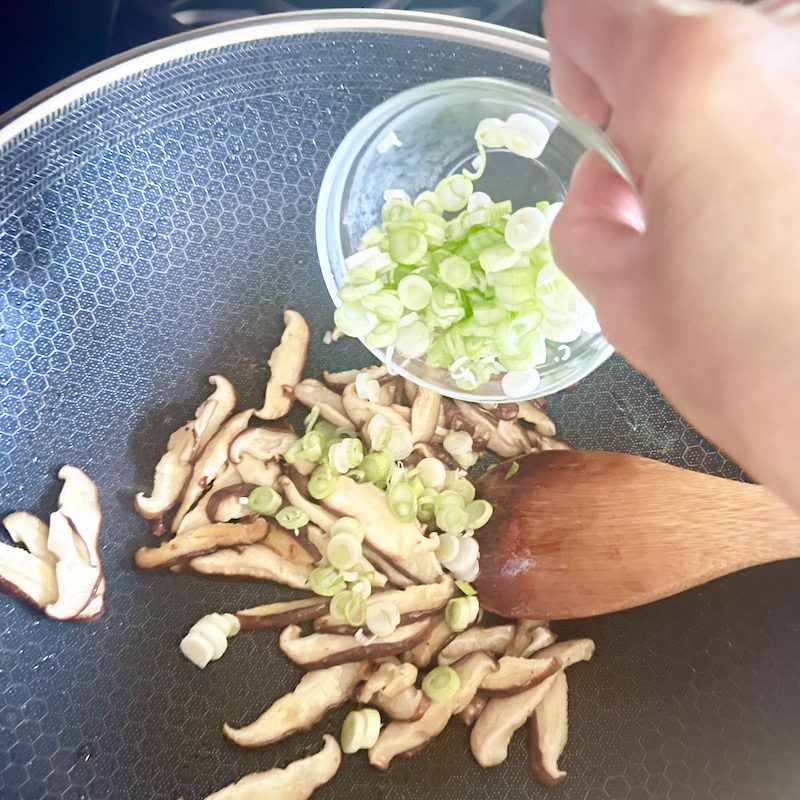
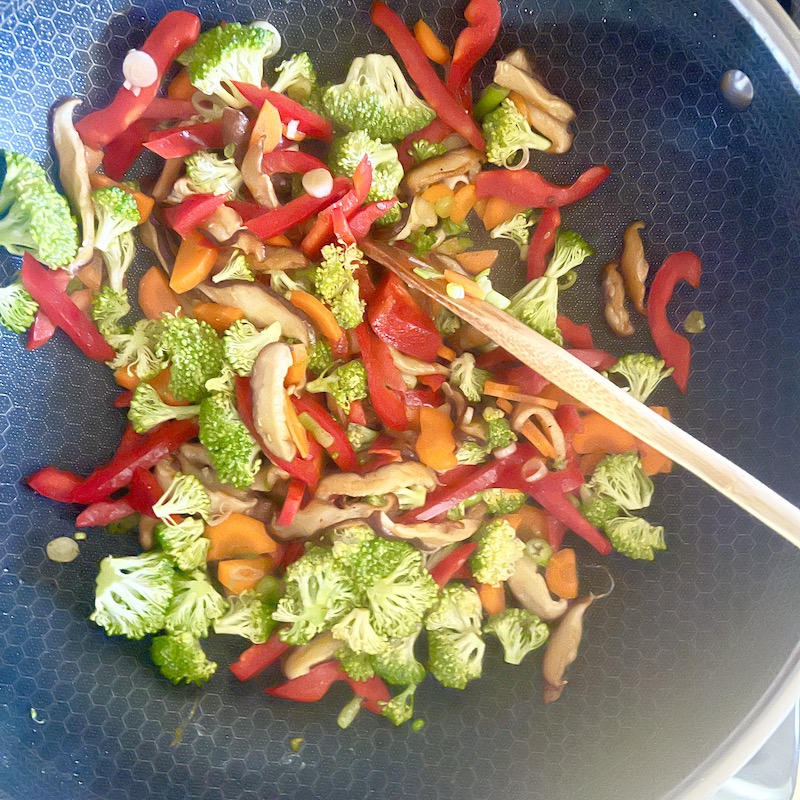
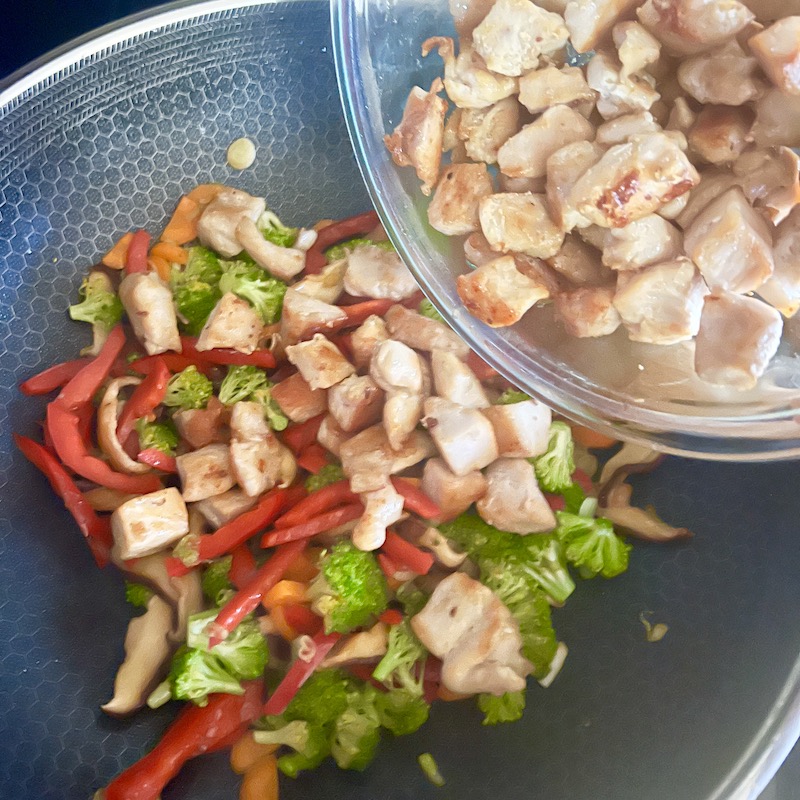
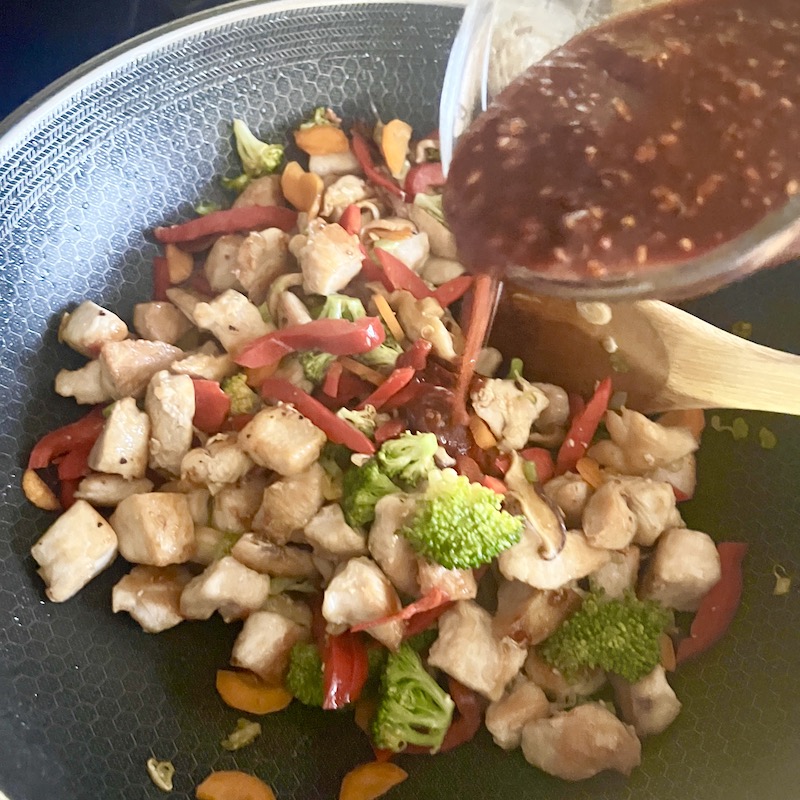
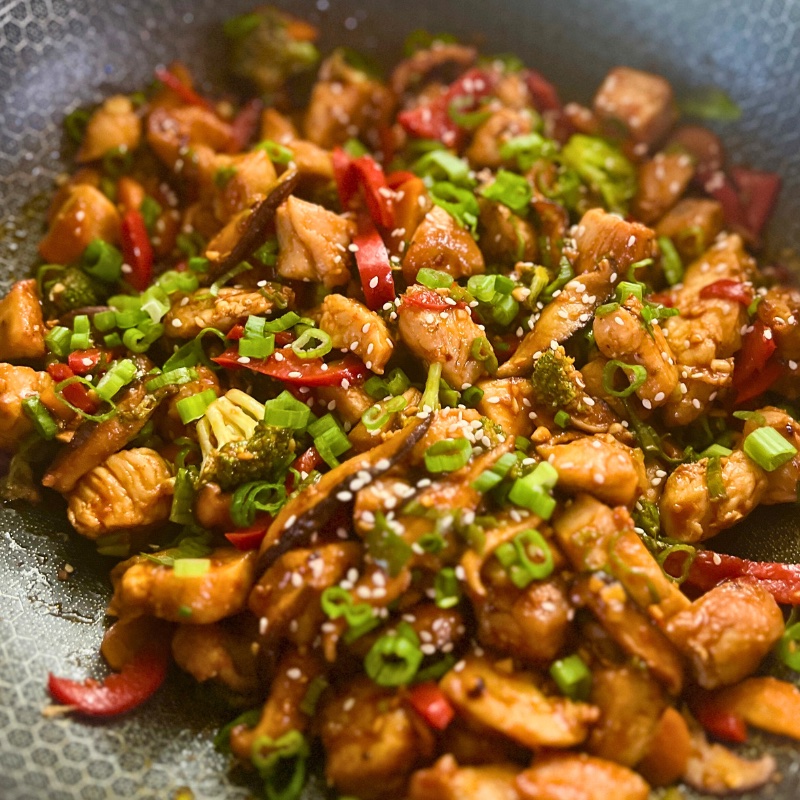
.
WHAT TO SERVE WITH GOCHUJANG CHICKEN STIR FRY
.
Steamed rice
Kimchi
Cucumber Salad
Japchae (Korean Glass Noodles)
Pickled radishes
Miso Soup
Lettuce Wraps
Korean Pancakes
Egg Rolls or Spring Rolls
To complement this dish, you can serve a variety of sides that will enhance its flavors and provide a well-rounded meal. Here are some great options to consider:
- Steamed White Rice: A classic accompaniment, steamed white rice helps balance the bold flavors of the stir fry and provides a neutral base to soak up the delicious sauce.
- Kimchi: This traditional Korean side dish of fermented vegetables, usually cabbage, adds a tangy and spicy contrast to the stir fry, enhancing the overall Korean dining experience.
- Cucumber Salad: A refreshing cucumber salad with a light sesame dressing can offer a cool and crisp counterpoint to the heat of the gochujang.
- Japchae (Korean Glass Noodles): Made with sweet potato starch noodles, vegetables, and a savory-sweet sauce, japchae is a delightful side that complements the stir fry’s flavors.
- Pickled Radishes: Pickled radishes are tangy and slightly sweet, providing a nice palate cleanser between bites of spicy chicken.
- Miso Soup: While more commonly associated with Japanese cuisine, a light miso soup can offer a warm, umami-rich complement to the meal.
- Stir-Fried Vegetables: A mix of stir-fried vegetables like bell peppers, broccoli, and snap peas can add extra nutrients and texture to the meal.
- Lettuce Wraps: Serving the stir fry with large lettuce leaves allows guests to create their wraps, adding a fun and interactive element to the meal.
- Korean Pancakes (Pajeon): These savory pancakes made with green onions and a simple batter are crispy and delicious, making them a great side dish option.
- Egg Rolls or Spring Rolls: These crispy appetizers filled with vegetables or meat can add a satisfying crunch to the meal.
.
FREQUENTLY ASKED QUESTIONS
.
Can I substitute Gochujang with something else?
While Gochujang has a unique flavor profile that’s hard to replicate, you can create a makeshift substitute using a mix of miso paste, chili powder, and a bit of honey or sugar. However, it won’t be the same.
Can I make this dish vegetarian or vegan?
Yes! You can substitute the chicken with firm tofu or a variety of vegetables like bell peppers, broccoli, and zucchini to make it vegetarian or vegan. Ensure you use a vegan-friendly Gochujang if needed.
Is Gochujang very spicy?
Gochujang is moderately spicy, but the level of heat can vary by brand. It’s a balanced heat that’s tempered by its sweetness and umami. You can adjust the amount used to suit your spice tolerance.
Where can I buy Gochujang?
Gochujang is available at most Asian grocery stores and online retailers. It is often found in the international or Asian food aisle of major supermarkets.
What type of chicken should I use?
Boneless, skinless chicken thighs are ideal for this recipe as they stay tender and juicy during cooking. However, you can also use boneless, skinless chicken breasts if you prefer a leaner option.
How do I store leftovers?
Store any leftovers in an airtight container in the refrigerator for up to 3-4 days. Reheat in a pan over medium heat until warmed through, adding a splash of water if needed to loosen the sauce.
.
.
.
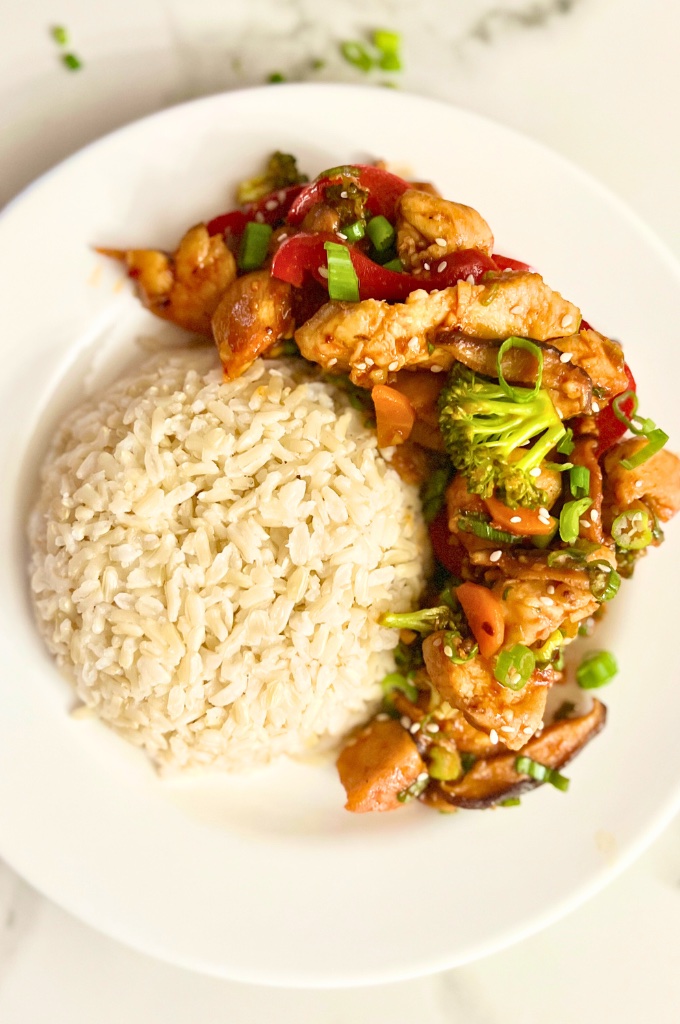
.

Gochujang Chicken Stir Fry
Equipment
- Wok or wide pan
- Bowls
- Spatula
- cutting board
- knife
- Measuring spoons
- Measuring cup
Ingredients
CHICKEN:
- 1 pound boneless skinless chicken breast, cut into bite-sized pieces
VEGETABLES:
- 4 oz or 8 pieces of shiitake mushrooms, cleaned and slices
- 4 stalks green onion, sliced and separated the white and green parts
- 1 medium size carrot, peeled and sliced
- 1 red bell pepper, deseeded and sliced
- 1 cup broccoli florets
SAUCE:
- 3 tablespoons soy sauce
- 1 tablespoon Gochujang
- 1 tablespoon tomato paste
- 1 tablespoon rice vinegar
- 1 tablespoon honey
- 2 teaspoons sesame oil
- 1 tablespoon finely minced ginger
- 2 garlic cloves, finely minced
- 1/4 teaspoon red chili pepper flakes
Instructions
- PREPARE THE CHICKEN: Cut the chicken an inch into bite-sized pieces. Season with salt and pepper. Heat a pan with oil over medium-high heat. Add the chicken and cook for 3 minutes on each side or until golden brown. Cook the chicken in batches to attain a nice caramelized color. Set them aside.
- PREPARE THE SAUCE: In a bowl, combine soy sauce, Gochujang chili paste, tomato paste, rice vinegar, honey, sesame seeds, garlic, ginger, and red chili pepper flakes. Mix all ingredients until combined.
- PREPARE THE VEGETABLES: Use the same pan you cooked the chicken in and add the shiitake mushrooms. Saute until tender. Then stir in the white part of the green onions, red bell pepper, carrot, and broccoli, then continue to saute until crisp-tender.
- FINISH COOKING: Add the cooked chicken back into the pan. Stir until combined and the chicken is well heated.
- SERVE: Serve the dish with the green part of the green onions and sprinkle with sesame seeds.
.
GET A FREE WEEK OF MEAL-PREPPING RECIPES WITH A GROCERY LIST
.

